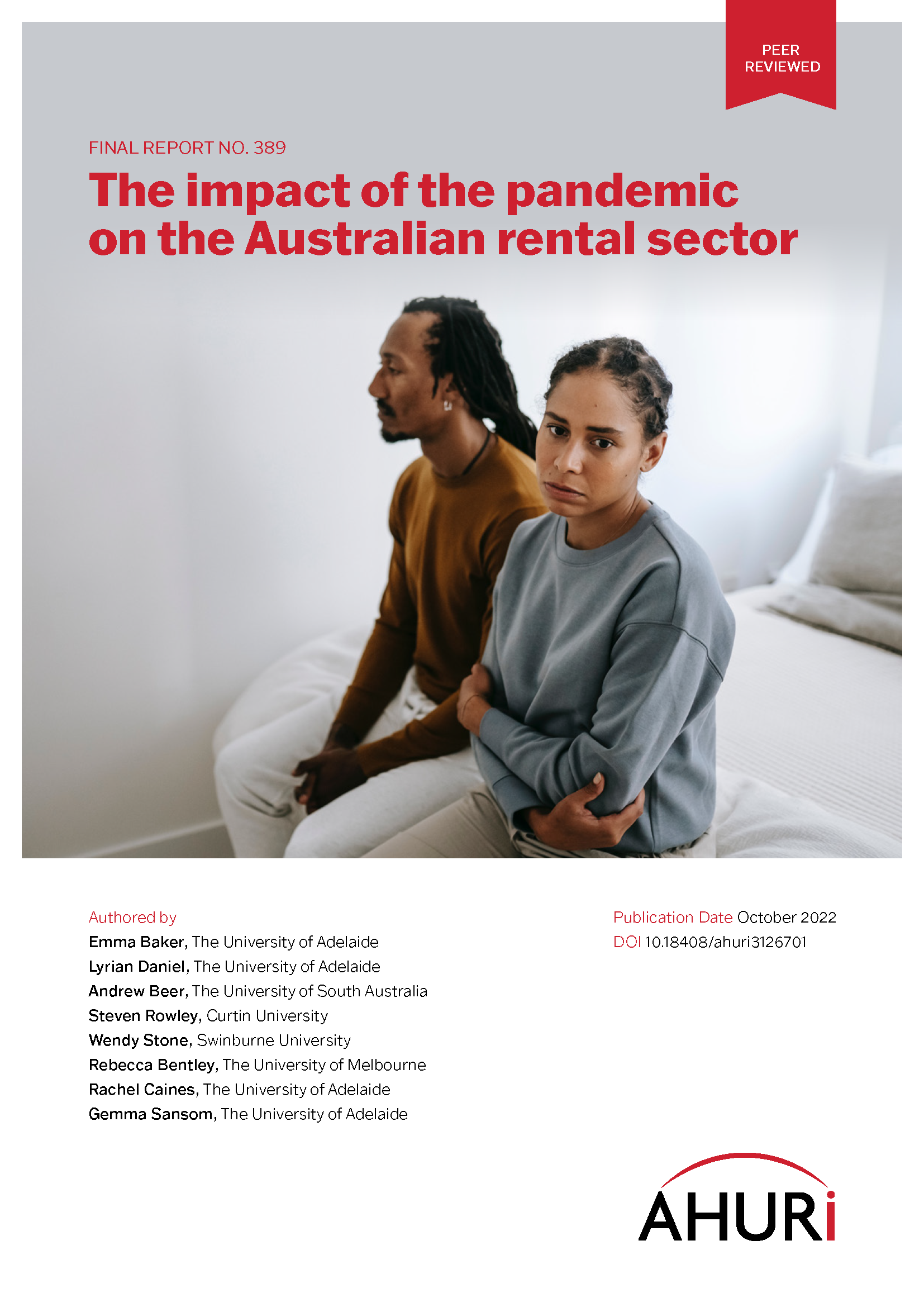
After more than two years of the pandemic, how is the Australian rental sector performing?
20 Oct 2022
Rapid house price rises and reduced rental affordability have been the unforeseen consequences of the pandemic, and policy responses to date have been ineffective, according to new AHURI research.
The research, ‘The impact of the pandemic on the Australian rental sector’, undertaken for AHURI by researchers from the University of Adelaide, the University of South Australia, Curtin University, Swinburne University and the University of Melbourne, investigates the Australian rental sector during the second year of the COVID-19 pandemic and considers priorities for governments and tenant experiences and reflections on the effectiveness of assistance and interventions.
‘By the second year of the pandemic, more than half of our research interview participants stated that they had struggled financially’, says lead researcher Professor Emma Baker of the University of Adelaide. ‘One-third of interviewees expressed concern over the increasing cost of living, such as rent, groceries and fuel, particularly those who relied on pensions for income. Some participants had also accessed non-government support during times of hardship in the form of food relief from Foodbank or Vinnies.’
More than two-thirds of interview participants stated that their mental health had worsened over the past 18 months. This was attributed to lockdowns, limited social interactions, and financial and personal pressures. Additionally, half of respondents identified a worsening of their physical health as a result of COVID-19. Many attributed this to a reduction in activity and access to gyms or fitness facilities and equipment, while one participant linked a decline in their physical health to mental health and financial struggles.
Participants also expressed a widespread concern in the ability to find and secure a suitable and affordable rental property in the current climate. Half of the participants suggested that the increase in prices made it harder to find suitable homes within their price range. Respondents in regional areas noticed an influx of people from city areas, and noted a related increase in competition and prices.
Housing and home became increasingly significant for online learning, productivity, as a site of relations and social support, and a place to support health and wellbeing. Detached housing and housing located proximate to family and friends are now of higher priority for private tenants than prior to the pandemic.
Consultation with policy stakeholders identified four overarching observations:
- The current challenges experienced within Australia’s rental sector largely reflect problems that existed pre-pandemic.
- There is no central leadership, interest in, or mandate to guide overarching reform of the private rental sector, rather governments are focussed on smaller-scale social housing interventions.
- Government thinking appears to be primarily focussed on increasing supply. However, tight market conditions, and labour and material shortages within the construction industry represent major challenges.
- An awareness that COVID-19 has increased the importance of intersectoral links across governments, and the need to bring health, housing and welfare together—a point especially important for Indigenous communities.
The research shows there is an enduring need for policy action and innovation focussed on the rental market through all stages of a major event such as a pandemic. Key initiatives could include reform of tenancy legislation such as protection from rent increases and retaliatory landlord behaviour, and more stable lease arrangements; the provision of a larger stock of affordable housing available through the social housing sector; and measures to sustain affordable entry into home ownership.
There is also scope to consider ways in which affordable housing provision could be better integrated with national urban planning aspirations through the economic and housing market development of smaller regional cities.

